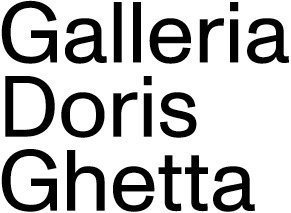PAVLO GROSU & MIHAI NUTU
Vernissage, 17.01.2017 18 – 21h
Via Ventura 6 - Milano
Press release
Comunicato stampa
Pressemitteilung
ENG
" The term “School of Cluj” is being used, with various meanings and tones, in various international art circles, largely referring to a certain approach to painting, characterized prominently by an option for the figurative, evocative register, a preference for vague historical or social references and an emphasis on the technical quality of the works, seen first and foremost as aesthetic objects.", writes curator Iacob Bogdan in one of his texts on Pavel Grosu. Both Grosu and Nutzu are figureheads of this type of painting.
The figurative paintings of Grosu often seem surrealist in their combination of elements. A man seems to drown knee deep in a swamp that turns out to be a tennis court. A spoon lets honey glide down on a partial nude that resembles Courbet's "The Origin of the World" (1866). Or Duchamp's "Etant Donné" (1946-66) since the body seems to be lying on a meadow. Despite their colorful palette the paintings often have a latent atmosphere of doomsday. Even more so the small format paintings of Mihai Nutzu. He drained them of everything except painting itself it seems. Though sometimes we see formations resembling Stonehenge or what looks like desert, wind and ocean in turmoil. Accordingly Nutzu reduced his pallet, which reinforces the impression of a lifeless landscape. Who said painting is not a suited medium for the post-human discourse?
Biography
Pavel Grosu was born in 1991 in the Republica Moldova, Sângerei, 1991, 3 March . He Works and lives in Cluj , Also working for His Phd. diploma
Mihai Nutu is born in 1987. He studied art history and painting in the painting department of The university of Art and Design in Cluj. At the present moment he lives and works in Cluj and finishing his Phd. studies.
ITA
Quella di Doris Ghetta diventerà una temporanea “galleria pop-up" per la seconda volta il 17 gennaio, presso via Ventura 6 a Milano.
Per l’occasione, Pavel Grosu (1991) e Mihai Nutzu (1987), due artisti che vivono e lavorano a Cluj, saranno presentati in una doppia mostra. Le opere esposte rappresenteranno una varietà di tipologie di pittura: dalla miniatura al figurativismo, dall’astrattismo al color field, al paesaggismo.
«Si inizia a usare il termine “Scuola di Cluj” in vari ambienti artistici con diversi significati e sfumature» scrive il curatore Iacob Bogdan in un suo testo su Pavel Grosu. «Ci si riferisce soprattutto a un certo approccio alla pittura, caratterizzato in particolare dall’opzione del registro figurativo, dalla preferenza per le citazioni storico sociali, e dall’enfasi sulla qualità tecnica delle opere, intese anzitutto come oggetti estetici». Sia Grosu sia Nutzu sono paladini di questo tipo di pittura.
Nella loro combinazione di elementi, le tele figurative appaiono spesso surrealistiche. Un uomo sembra affogare in una palude che poi si rivela un campo di tennis. Un cucchiaio permette al miele di scivolare giù su un nudo parziale che somiglia a “L’origine del mondo” di Courbet (1866). Oppure, poiché sembra che il corpo sia sdraiato su un prato, a "Etant donnés" di Duchamp (1946-66). Nonostante la vivacità dei colori, i quadri celano spesso un’atmosfera apocalittica. Ciò è ancora più vero di quelli in piccolo formato di Mihai Nutzu, che paiono svuotati di tutto tranne la pittura stessa. Anche se talvolta in essi scorgiamo formazioni che richiamano Stonehenge e immagini che ricordano deserti, venti o oceani agitati, Nutzu riduce la tavolozza dei colori per rafforzare l’impressione di un paesaggio senza vita. Chi ha detto che la pittura non sia un mezzo adatto al discorso postumano?
Biografia
Pavel Grosu é nato nel 1991 a Sângerei nella Repubblica Moldova. Vive e lavora a Cluj, Romania.
Ha studiato pittura all’Università di Arte e Design di Cluj, dove stá facendo al dottorato di ricerca.
Mihai Nutu é nato nel 1987 a Bistrița, Romania. Vive e lavora a Cluj, Romania.
Ha studiato storia dell’arte e pittura all’Università di Arte and Design di Cluj dove sta facendo il dottorato di ricerca.






